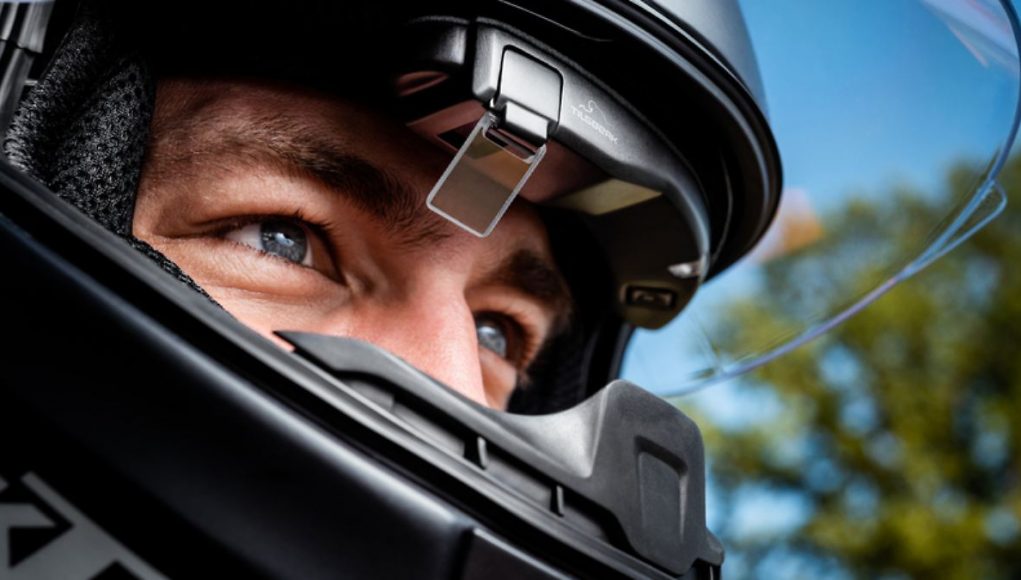Head-up displays for bikes
This means motorcyclists can keep an eye on everything
This audio version was artificially generated. More info | Send feedback
Head-up displays are becoming increasingly standard in cars. But various systems are also offered for motorcycles, in a helmet or in glasses. What can they do and what should drivers pay attention to?
The motorcyclist weaves easily through the curves, constantly looking at the road. Every now and then a quick glance at the speedometer or navigation system, then immediately get back on the road. But in just one second the machine rushes more than 27 meters further at 100 km/h. A lot can happen in them.
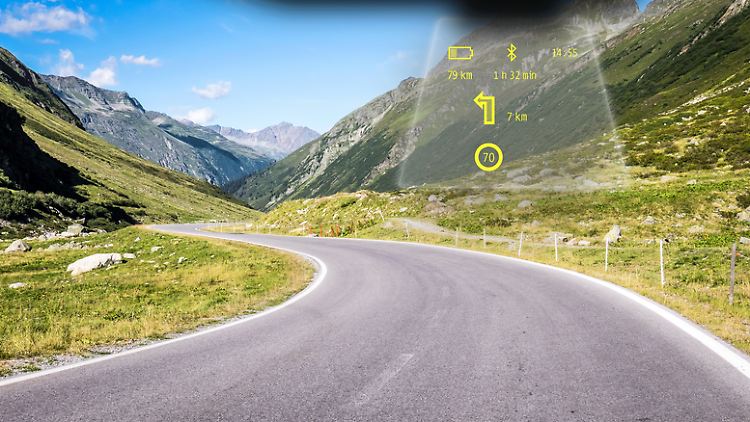

Comfort like in modern cars: Motorcyclists don't have to do without the comfort of a head-up display.
(Photo: Tilsberk/dpa)
It is safer if the pilots keep their eyes on the road at all times. This works with head-up displays (HUD). They display information such as speed or navigation arrows in a small viewing window. What is almost standard in middle and upper class cars has not yet become established in motorcycles.
The Würzburg Institute for Transport Science (WIVW) has examined the security potential of HUD data glasses. Result: As soon as a parallel driving task is added, the performance of the test subjects with data glasses is higher than without.
The view stays where it belongs: on the street
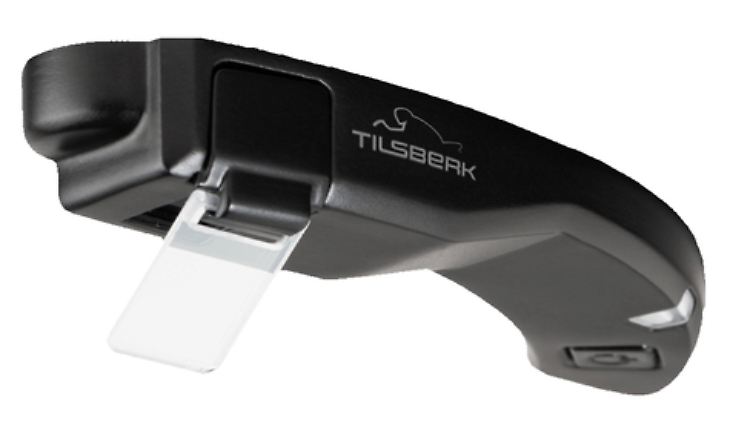

Head-up systems like this one from Tilsberk can be integrated into the helmet.
(Photo: Tilsberk/Tilsberk/dpa)
The information displayed in the HUD largely corresponds to that shown on modern cockpit displays or motorcycle navigation system displays. “If your eyes stay on the road, it's first and foremost for safety,” says Ruprecht Müller from the ADAC Technology Center.
“The distracting look at the vehicle's dashboard is no longer necessary, you can still keep an eye on what's happening on the road and your eyes remain on the road,” says Matthias Haasper, from the Institute for Two-Wheeler Safety (ifz). This offers advantages in the event of unexpected events such as a sudden braking maneuver by the driver in front.
As glasses or integrated into the helmet
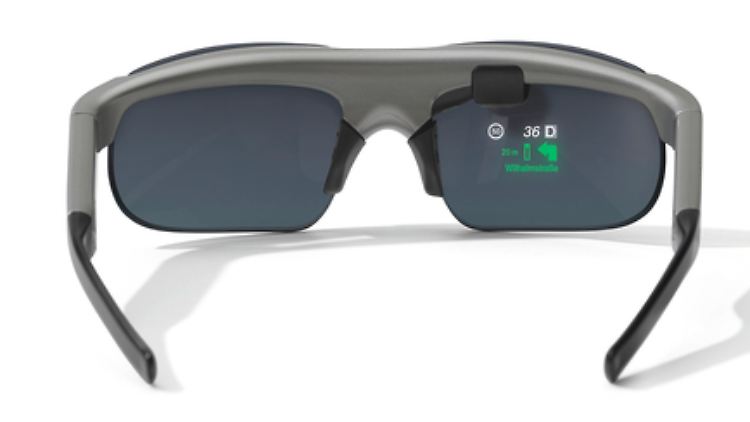

These sunglasses from BMW Motorrad display ride information.
(Photo: Arnold Debus/BMW Group/dpa)
The models are available either as glasses or the information is reflected on a small visor inserted into the helmet. Whether the HUD is integrated into the helmet or into glasses depends on personal preferences. “Therefore, anyone interested should try out the systems with their own helmet,” says Matthias Haasper.
Most motorcyclists like uncomplicated and simple solutions, which is why the ADAC expert sees the greatest advantages in easy-to-use HUD glasses. “We see glasses as the best solution for a HUD. There is space for them in most helmets, the glasses are also available with corrective lenses and the operation with glasses is learned,” says Ruprecht Müller.


At the center of the systems is usually a smartphone.
(Photo: Tilsberk/dpa)
Practical: Since the data glasses or HUDs are usually connected to a smartphone, they work independently of the motorcycle. Even pilots of older aircraft can therefore travel with modern technology in their helmets.
However, the space available in helmets varies greatly and is often limited. Additions or installations must not exceed a certain size. Larger displays can obstruct the view. In addition to different fits and types of helmets, the way helmets are worn also differs. Some motorcyclists wear their helmets low so that the edge of the helmet is close to their eyebrows. This means that HUDs do not fit in every helmet and not for every driver.
It's better not to display too much information
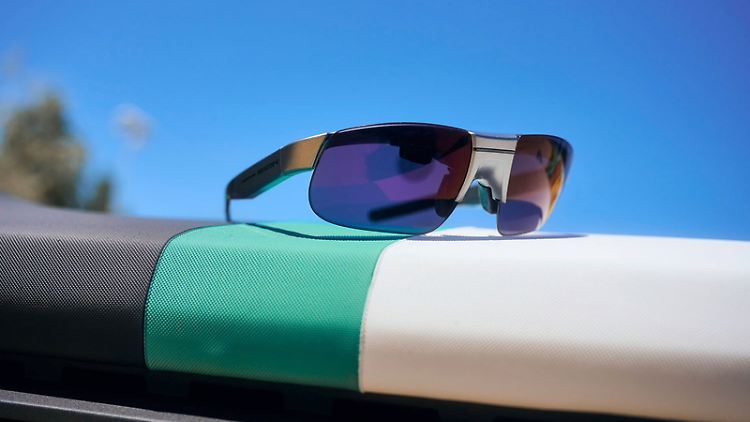

Sunglasses? Yes, too – but the BMW Motorrad ConnectedRide also offers an integrated head-up display.
(Photo: BMW Group/BMW Group/dpa)
In addition to the fit, the size of the HUD display is also important when choosing digital scouts. Depending on the size of the HUD, only a small amount of information can be reflected into the pilot's field of vision. That doesn't have to be bad. “From a safety perspective, it makes sense to limit the HUD information to what is absolutely necessary. For example, the speed driven or navigation information,” says Matthias Haasper.
According to ADAC expert Müller, it is important that the systems can be switched off quickly when the lighting conditions change. Because of the small distance between the eyes and the display, it also takes some getting used to when focusing on characters in the HUD.
According to Müller, it is quite conceivable that there will be more HUD systems for motorcyclists in the future. With further information about car-to-X communication, warnings about curves, potholes or accidents could be displayed directly in the pilot's field of vision – and thus warn him of dangers in good time.
Product examples
- With the DVision, Tilsberk from Saxony offers a HUD system that is simply plugged into a helmet and connected to the smartphone. It displays information about navigation, speed, speed limit, compass, time and incoming calls. Price: around 400 euros.
- The EyeLights HUD shows, among other things, a graphic of the route to be traveled, as well as the time, distance and speed. The system can be integrated into most helmets and connected to your smartphone and many Android or IOS apps. Price: around 500 euros.
- The BMW ConnectedRide Smartglasses are glasses in which a small HUD is displayed. There, pilots can see driving information such as speed or navigation. The glasses receive the data via the BMW Motorrad Connected app. Like sunglasses, the ConnectedRide Smartglasses fit under most helmets. Price with clear and tinted lenses: around 690 euros.
- The Cosmo Vision is a fairly large pair of connected glasses with a mini AR head-up display that offers GPS guidance and performance monitoring. The Cosmo Vision receives its data via an app on the smartphone. Price: around 350 euros.



















